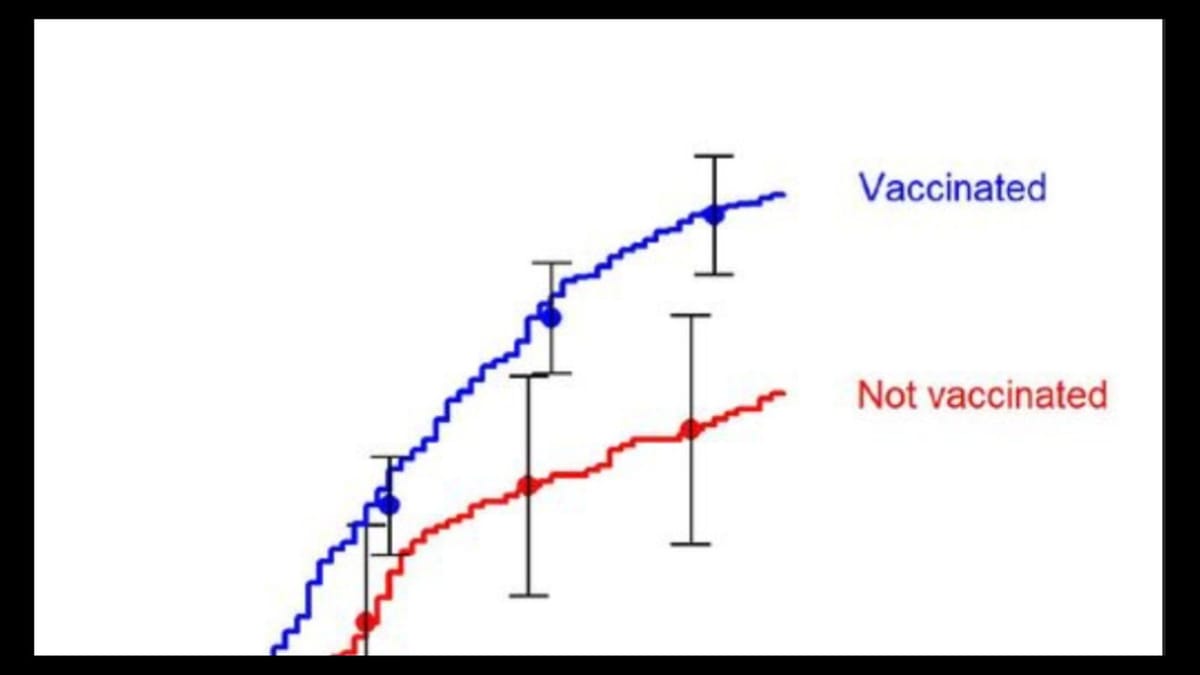Cleveland Clinic Study Finds Negative Benefit From 2024 Flu Shot
Religious and Medical Exemptions provided control group in 52k person study

A landmark study published April 4, 2025 has found a negative benefit of 26.9% from the flu vaccine during the 2024-2025 flu season.
In other words, adults who received their annual flu shot were nearly 27% more likely to get the flu than those who did not get the flu shot.
The study involved 52,402 employees of the Cleveland Clinic, a large academic medical center in upper Ohio. The study began October 1, 2024 and tracked the cumulative incidence of influenza throughout the 25 weeks of the study.
82.1% of the participants were vaccinated against influenza during the study period. The Cleveland Clinic allows medical and religious exemptions to vaccination, and the unvaccinated made up the control group for the study. The overall incidence of lab-documented influenza was 2.2% during the study.
The study found that, “In an analysis adjusted for age, sex, clinical nursing job, and employment location, the risk of influenza was significantly higher for the vaccinated compared to the unvaccinated…(this) yielded a calculated vaccine effectiveness of -26.9%.
This negative effectiveness of nearly 27% was not significantly different early on, but “over the course of the study, the cumulative incidents of infection increased more rapidly among the vaccinated than among the unvaccinated.”
The study is already being hailed as “one of the most consequential influenza vaccine studies published in recent years“ because of its large sample size, real-world design, risk-based outcome and robust statistical methods. It is also notable for its lack of industry funding and potential conflicts of interest by the authors.
Karl Jablonowski, Ph.D., Senior Research Scientist for Children’s Health Defense believes the study would not have been possible with religious or medical exemptions.
“If the Cleveland Clinic did not allow a religious exemption, it is likely the unvaccinated group would be too small to perform the study,“ Jablonowski said. “Is an utter absurdity that those who were medically and religiously exempt posed measurably and significantly less of a threat of spreading influenza to patients than those who were mandated.”
The authors of the study focused on working-age adults, but it is not the only study to show a negative benefit from routine vaccination. A 2012 study found that children who received the flu shot had a significantly higher risk of having non-flu respiratory infections.
While the authors of the study did not speculate as to why the flu shot seemed to have a negative benefit, others have speculated that reasons other than strain mismatch (where the yearly vaccine does not cover the strains that appear during flu season) may be at work. James Lyons-Weiler, Ph.D. said that:
“The most likely explanation involves immune modulation caused by the vaccine—where prior exposure via vaccination may reduce the immune system’s capacity to respond to circulating strains, especially when strain mismatch is present.”
Lyons-Weiler also pointed out that the trivalent vaccine most commonly used in the study likely contained thimerosal—a mercury-based preservative which has been linked to neurodevelopmental disorders.
The Cleveland Clinic study demonstrates that in a real-world situation, current vaccine orthodoxy may be causing more harm than good. In an era of growing skepticism about vaccines and growing support for religious exemptions, this landmark study brings important information to the vaccine debate.




